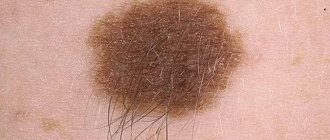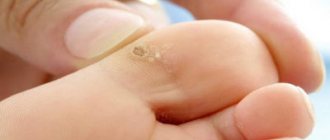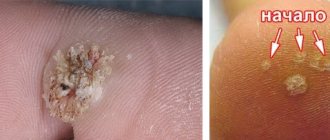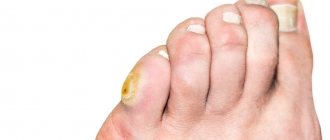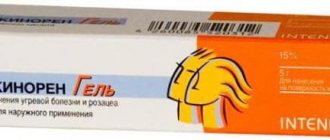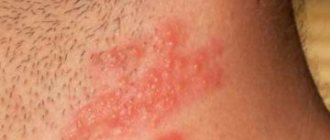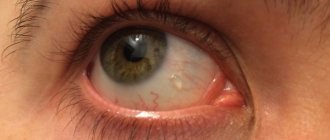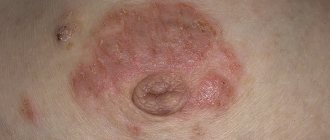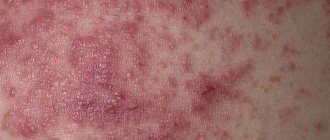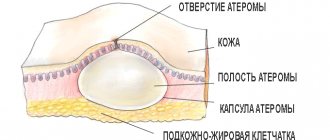Very effective remedy for corns and calluses
There is a very effective remedy for corns and calluses based on Aspirin. Before you begin the callus removal procedure, you need to thoroughly steam your feet in warm water with the addition of sea salt. Then you will need to crush 6 Aspirin tablets into powder and add a teaspoon of water and a teaspoon of lemon juice to them. The finished composition is applied to the callus and the feet are wrapped in plastic wrap. They are insulated on top with woolen socks. After 15 minutes, the film is removed and the feet are treated with pumice.
To get rid of calluses, the procedure must be carried out over a course of 2 weeks. Wraps are done every other day. This will allow you to quickly remove corns and other skin growths on your feet.
Video: the best way to get rid of corns and calluses:
How do corns appear?
At the beginning of the development of dry calluses, redness and swelling of a certain area of the skin occurs. Subsequently, the skin in this area turns yellow or gray, the surface becomes rough, and sometimes cracks form on it. Dry calluses can be round or raised. There is a decrease in the sensitivity of the damaged skin. There is discomfort or pain while walking. If there are deep cracks, the pain increases. In some cases, the appearance of a corn is associated with an irregular shape or displacement of the finger, which increases the load on it.
Causes of corns formation and ways to combat them
An effective recipe for calluses
If the callus is wet, then it is forbidden to pierce it. Interstitial fluid is needed for the foot to protect itself. It is necessary to treat the callus with a disinfectant solution, for example brilliant green. Then an adhesive plaster is applied to the callus. To help the callus heal faster, you should not put pressure on it.
It is strictly forbidden to cut off dry calluses. With this traumatic method of treatment, there is a high risk of infection, which leads to the development of the inflammatory process. To get rid of dry calluses, you need to make a soda bath for your feet. For 2-3 liters of water, take 2 tablespoons of soda and a teaspoon of liquid soap. The feet are kept in this bath for 15 minutes. During this time, the dry callus will soften and can be removed mechanically, for example, using pumice.
Video: a program about the most important thing “how to treat calluses on the feet”:
Rod corns
Core calluses resemble dry calluses in appearance. The difference is the presence of a rod in the center of the callus. Very often they occur as a complication of untreated dry calluses. The rod causes pain at the slightest movement. It is covered with a cork on top. Such calluses tend to increase, so do not delay treatment. Depending on the provoking factor, corns are divided into two types.
The first type, like dry corns, occurs with constant friction or pressure on the skin of the feet. They form especially often under the fingers of women. Wearing narrow shoes with heels provokes the occurrence of such calluses. Corns with a core are also often observed in athletes, especially runners.
The formation of the second type of corns is associated with the presence of a dermatotropic virus in the body. Their treatment involves not only local exposure, but also the use of antiviral drugs.
It is very difficult to get rid of calluses, especially in advanced cases. This is due to the presence of a rod that penetrates deeply into the skin. Self-treatment is often ineffective. If the rod is massive, it is better to consult a doctor who will select the optimal treatment method.
Salipod plaster for calluses
Salipod patch is a universal remedy for combating dry calluses. It is used to remove corns, as well as calluses with a core. The patch has a disinfecting effect, softens rough skin and relieves pain. It acts deeply, which allows you to get rid of the root of the callus.
How the salipod patch works
The patch contains sulfur, salicylic acid and antibacterial components. With a complex effect on the skin, they soften its rough layer, as a result of which the callus can be easily removed. It is destroyed from the inside, as sulfur penetrates into its structure. First, the top layer of skin is peeled off, and then the callus itself disintegrates. Separating it from the healthy dermis is not difficult.
Salicylic acid causes the callus to oxidize and all bacterial flora to die. The use of this patch is especially useful for people with fungal foot infections. During the destruction of the callus, mycotic microorganisms will die and will not be able to spread over the skin of the feet. In addition to sulfur and salicylic acid, the salipod patch contains rosin, lanolin and rubber. They are designed to enhance the effect of the main components.
Sulfur, under the influence of excipients, penetrates deeply into the callus tissue and destroys it. In this case, it is even possible to get rid of the root.
In addition, sulfur dries out the callus. Its cells are unable to adhere to each other and disintegrate. During the treatment, the person does not experience pain.
How to use?
Before starting treatment, you need to consult a dermatologist. The patch can only be used with the permission of a doctor.
The procedure is carried out as follows:
- The feet are steamed in a bath with sea or table salt added to it. The procedure takes 15 minutes.
- After steaming the feet, wash them thoroughly with soap and wipe dry with a towel.
- The patch is cut to the desired size and glued to the callus.
- Fix the medical plaster with an ordinary plaster.
- The salipod patch is worn throughout the day. It is then replaced with a new one.
- To get rid of a callus, you will need to perform 5-8 procedures to replace the patch.
- During each change, the callus must be treated with a scraper or blade. Separate it in small parts. If the removal procedure causes concern, you can seek help from a surgeon.
Store the patch at room temperature, not higher than +21 degrees. Otherwise, salicylic acid may lose its activity, and the patch itself will dry out and not have the desired effect.
To enhance the effect of the therapy, the callus can additionally be lubricated with Nemozol ointment.
Pros of the salipod patch
The components with which the patch is impregnated have an optimal ratio. They allow you to quickly and safely get rid of calluses.
Using the patch is not associated with pain. However, surgical removal of callus always requires local anesthesia.
The patch can be used to remove calluses in pregnant women, children and the elderly.
The advantage of the patch is that it has an antibacterial effect. Even if the skin is injured during treatment, the wound will not get infected. This is especially true for removing calluses on the feet, because human feet are always surrounded by a huge number of microbes.
Relapses of calluses after therapy are rare.
Indications for use of the salipod patch:
- Dry calluses.
- Dry calluses with a core.
- Corns.
- Warts.
Most often, a salipod patch is used to remove calluses with a rod inside. Therapy is carried out at home, which is very convenient. If necessary, you can visit a surgeon practicing in a clinic near your place of residence.
Contraindications for use
Contraindications to the use of the salipod patch:
- Allergy to the components included in its composition. If there is an individual intolerance to sulfur or salicylic acid, then an inflammatory reaction may occur at the site of attachment of the patch. In this case, its use is abandoned. Together with your doctor, you need to look for other methods of dealing with calluses.
- Kidney failure. The sulfur contained in the patch has the ability to accumulate in the body. This increases the load on the kidneys, which is strictly prohibited for such people. Otherwise, the course of the disease may worsen.
- Moles located in close proximity to the callus.
- Age under 3 years.
The smaller and younger the callus, the faster you can get rid of it using a salipod patch. Sometimes 3 procedures are enough to forget about the callus forever.
Treatment at home
Many people try to get rid of a painful growth on their little toe on their own. During the treatment period, you must stop wearing shoes that have chafed. It is best to temporarily switch to flip-flops, comfortable slippers, open sandals on a low platform, especially since a person will still not be able to wear tight shoes at this moment.
If a wet callus has burst and a wound has formed on the skin, it is better to cover the sore spot with a bactericidal plaster; it will protect against infection. In the case where there is a growth on the little toe with a rod, it is better to entrust its removal to a specialist. You won’t be able to cope with the callus on your own. But you can get rid of dry growths if you spend some effort and a little time.
Steaming in a bath
Warm baths will be useful as a primary and secondary treatment. If the callus is not too old, by softening it in water and removing the stratum corneum, you can completely get rid of the problem. Pharmaceutical products will additionally help remove a callus on the little toe .
The water temperature for the procedure should be approximately 40 °C. To soften, it is recommended to add 2 tsp. baking soda. You need to steam your feet for 15-20 minutes. After this, a special patch for calluses is glued to the problem area, or the rough skin is cleaned with large-pored pumice. Sometimes one procedure is enough; for old calluses, you will have to take baths several times.
Use of folk remedies
To remove a callus on the little toe, you can use folk recipes. To remove callus, the simplest and most affordable means are used, which are available in every home. To get the effect, the procedure will have to be repeated several times:
- Potatoes and onions. You can use the vegetables separately, or make a two-component mixture. Each of them needs to be grated on a fine grater, wrapped in several layers of gauze and a compress applied to the roughened area. To retain the juice, film or parchment paper is placed on top and secured with a band-aid. It is recommended to leave such compresses overnight, then hyperkeratosis will be cured faster.
- Aloe leaf. This flower grows in many homes and is used as a home doctor. The mature lower leaves have the greatest medicinal properties. It is necessary to cut off one of them, remove the skin with a knife and apply it to the problem area. The compress is secured with a plaster or bandage and left overnight. Often, one procedure is enough to completely get rid of the callus. If a single application of the compress does not help, it will need to be applied several more times.
- Prunes. Before using dried fruit to reduce callus, it must be held over hot steam to soften it. While the prunes are warm, apply them and keep them until they cool. You need to repeat the procedure with several fruits in a row, each of them is preheated. This method is used daily for a week. Prunes are gentle and therefore suitable for sensitive skin.
- Lemon. The effect on hard callus occurs due to citric acid. First, you need to steam the skin for 10-15 minutes, and then apply a slice of lemon to the sore spot and secure it with a band-aid. It is advisable to leave the bandage overnight. In most cases, 2 procedures are enough to remove callus. This method will not work if the skin has cuts, abrasions or other damage.
It is very convenient to use ready-made medical patches, creams and ointments designed to get rid of calluses. The main active ingredient in these products is salicylic acid.
Open the callus or wait?
A water callus is a blister that forms on the skin as a result of excess friction. Whether or not to open a callus depends on whether a person can eliminate the factor that led to the formation of a wet callus. If he knows that tomorrow he will have to put on the same uncomfortable shoes again, which will again begin to rub the skin, then the callus needs to be opened and disinfected.
The callus should be opened correctly, using a needle. It is heated over a fire or disinfected with an antiseptic. Then, using cotton wool and an antiseptic, the surface of the callus is treated. They pierce it on the side. Using gauze, press on the callus and remove all the fluid that comes out. Then a compress with an antiseptic is applied to it. For example, with gauze soaked in Chlorhexidine.
The skin covering the opened callus should not be cut off. It acts as a natural tissue protection. You just need to carefully remove its torn edges, if any.
When it is possible to save the callus from further trauma, it should not be opened. It will go away on its own. You can speed up this process with light self-massage.
When the callus is large and interferes with walking, a special insole can be made. A cut is made in the center of such an insole so that the callus can “breathe.”
So, the callus needs to be opened if further traumatic effects on it cannot be avoided, but the procedure must be carried out correctly. When it is possible to minimize the load and external pressure on the callus, then there is no need to open it. The wet callus will go away on its own, you just need to wait time.
Video: wet watery callus - pierce or wait?:
Reasons for education
The main reason for the formation of calluses localized on the little toe is wearing tight, new or uncomfortable shoes. A particular danger is the desire to wear shoes that are smaller than the appropriate size.
Shoes with narrow toes that squeeze the toes rub the little toe. In such a situation, as a result of friction, calluses form on the outside of the little finger or on the skin between the fingers. In hot summer weather, little toes are subject to severe friction due to the straps of summer sandals. Excessive stress falls on the toes of the foot due to long walking in high heels.
The development of the disease with the formation of callus is provoked by factors such as infection after opening of the blisters, the appearance of fungus, mechanical damage, and prolonged rubbing of dry growths with uncomfortable shoes.
The reasons that contribute to the appearance of calluses on the little fingers include illiterate selection of socks. If they are large in size, they roll off and rub the skin. The provoking factor is excessive sweating of the feet, which most often occurs when wearing shoes made of artificial material.
Core callus: causes, treatment and photos
The callus grows deep into the skin, it looks like a dense keratinized growth on the foot, on the toes, and rarely appears on the palms. At first glance at it, you get the impression that a very ordinary callus has formed, in which there is a core, a black dot in the center and causing discomfort. The place on the leg where this dense, rough growth is located is very painful when walking. Calluses that rub against your shoes and interfere with the normal movements of your feet make it impossible to wear nice shoes. But there is a chance for treatment, provided you visit a doctor in a timely manner.
"Mozolin"
The drug helps soften keratinized skin.
It has strong softening properties. Use in children is prohibited. Before gluing, the leg is thoroughly washed and dried. Apply so that the soaked area of the patch covers only the callus plug. Keep for up to two days. After this time, the patch is removed, the leg is ripped open and the cap of the corn is tried to be removed. These steps are repeated until the keratinized area comes off.
Types of calluses
Calluses are divided into:
- wet - popularly called dropsy. A blister containing serous fluid forms;
- blood - similar bubbles, but there is blood inside;
- purulent – the corpus callosum becomes contaminated with pathogenic microflora;
- dry calluses are the result of skin hyperkeratosis.
Mostly dry calluses form on the soles. It is impossible to find a wet callus here; the skin in the sole area is deprived of an abundance of moisture, and accordingly, the serous exudate has nowhere to come from. The possibility of the formation of blisters with exudate is excluded, therefore, there is nothing to fester. But in the area of the feet there is an abundance of cells of the stratum corneum of the skin. This explains the formation of dry calluses.
Calluses on the soles and area of the pads are dense, painless formations in the form of a callosal compaction. If you do not pay attention to the formations in time, they will transform into the stage of mature dry callus, and getting rid of the compaction will become problematic. Dry calluses are characterized by the frequent formation of a core that penetrates into the skin tissue. The callus is fixed more firmly on the leg and enhances the cosmetic defect.
Treatment of calluses on toes
To effectively treat corns, you first need to remove the cause of their formation. Since uncomfortable shoes are most often to blame, it is necessary to change them to more comfortable ones, in which you will not feel pain when walking. In case of severe pain, you need to take an anesthetic or anti-inflammatory drug - diclofenac, ketanov, ibuprofen. Local treatment consists of applying patches, ointments or creams with a high content of salicylic acid. They help soften the callus plug, which can then be easily removed mechanically. Ointments or creams are applied only to the spot, as they can damage healthy skin. For complete safety, you can first stick a regular patch on the skin, after cutting out a hole in it the size of a corn plug. Ointments are applied for 1-2 days. If necessary, repeat the procedure.
